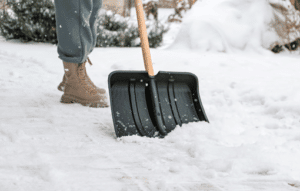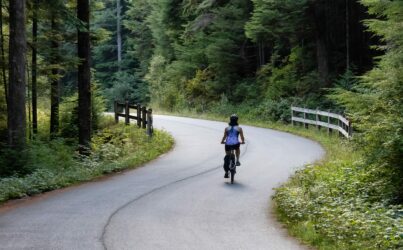Winter storms and other severe weather events have been sweeping the nation lately, leaving snow, leaves and debris in their wake. Yard clean-up is unavoidable after a storm, whether it’s shoveling snow, raking leaves or picking up fallen branches. And although you can’t avoid doing yard work, you can avoid injury by keeping these safety tips in mind.

Just as any athletic activity can injure your body, the twisting, turning, bending and reaching of shoveling and raking can also cause injury if your body is not prepared. Like an athlete, if you leap into something without warming up or knowing how to do it, the chances of injury increase. To prevent unnecessary strain and pain, consider these simple tips before you get started:
- Wear supportive shoes. Good foot and arch support can prevent some back strain.
- Stand as straight as possible and keep your head up as you rake or mow.
- When raking, use a “scissors” stance: right foot forward and left foot back for a few minutes, then reverse, putting your left foot forward and right foot back.
- Bend at the knees, not the waist, as you pick up yard equipment, piles of leaves or fallen branches. Make the piles small to decrease the possibility of back strain.
Using Outdoor Equipment
Equipment like leaf blowers, edgers and hedge trimmers can be helpful for getting a yard back in shape after a storm, but it’s important to exercise caution to avoid musculoskeletal pain. These tips can help you safely enjoy a productive day in the yard:
- Regardless of what piece of equipment you use, make sure it has a strap and that you use it. Place the strap over your head on the shoulder opposite the side of your body from the device. This will help normalize your center of gravity.
- Be sure to switch the side on which you operate the equipment as often as possible, and to balance the muscles being used, alternate your stance and motion frequently.
- Try ergonomic tools. They’re engineered to protect you when used properly.
- When mowing, use your whole body weight to push the mower, rather than just your arms and back.
- If your mower or edger has a pull cord, don’t twist at the waist or yank the cord. Instead, bend at the knees and pull in one smooth motion.
- Take frequent breaks from the activity of the day. Muscle fatigue may be felt when using any of these devices for an extended period.
Shoveling Snow
Shoveling snow without proper preparation can wreak havoc on the musculoskeletal system. Consider the following tips to help prevent injury:
- Layer clothing to keep your muscles warm and flexible. Shoveling can strain “deconditioned” muscles between your shoulders and in your upper back, lower back, buttocks and legs. Do some warm-up stretching before you grab the shovel.
- When you do shovel, push the snow straight ahead. Walk it to the snowbank–don’t try to throw it. Avoid sudden twisting and turning motions.
- Bend your knees to lift when shoveling. Let the muscles of your legs and arms take some of the strain of shoveling off your back.
- Take frequent rest breaks to take the strain off your muscles. A fatigued body asks for injury.
- Stop shoveling if you experience chest pain, shortness of breath, or get very tired. You may need emergency medical assistance.
For more information on prevention and wellness, or to find a doctor of chiropractic near you, visit www.HandsDownBetter.org.
Reviewed by the ACA Editorial Advisory Board. The information in this post is for educational purposes. It is not a replacement for treatment or consultation with a healthcare professional. If you have specific questions, contact your doctor of chiropractic. To find an ACA chiropractor near you, click here. Please note, chiropractic is regulated by state law, and the scope of what chiropractors may treat may differ from state to state. Check with your state licensing board to learn more.



